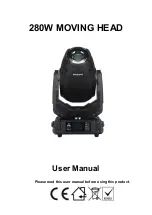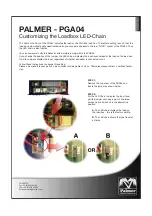
7
5. Place the weight (petcock) onto the vent nozzle, making sure it is fully seated and rotates freely (Figure 6).
6. Rest the lid on the pan until ready to use.
7. Plug the instrument into a grounded electrical outlet. If you are facing the Decloaking Chamber, the on/off switch is located to the
right of the display panel on the front. It will illuminate red if the instrument is turned on.
Note:
For elevation greater than 2000 M, time duration may need to be adjusted.
Recommended Protocols
The protocols for a specific application can vary. These include, but
are not limited to: fixation, heat-retrieval method, incubation times,
tissue section thickness and detection kit used. Due to the superior
sensitivity of these unique reagents, the recommended incubation
times and titers listed are not applicable to other detection systems,
as results may vary. The data sheet recommendations and protocols
are based on exclusive use of Biocare products. Ultimately, it is the
responsibility of the investigator to determine optimal conditions.
These products are tools that can be used for interpretation of mor-
phological findings in conjunction with other diagnostic tests and
pertinent clinical data by a qualified pathologist.
Recommended protocols for HIER with Decloaking Chamber Plus:
125°C for 30 seconds
95°C for 40 minutes
90°C for 15 minutes
80°C for 60 minutes
60°C for 15 hours
Beginning Operation
Adjust the pan by matching the pan handles with the body handles. Be certain that the outside of the pan is dry, as any wetness will
cause the Decloaking Chamber to make a crackling noise and may cause a malfunction.
1. Make sure the pan is filled with 500 ml DI water (Figure 2).
2. Turn the red main power switch to the ON position (the red light will go on).
3. Place Tissue Tek containers filled with 250 ml of heat-induced epitope-retrieval (HIER) solution in the pan. Alternatively, plastic
Coplin jars can be used with 50 ml HIER solution in each one (Figure 4a).
Note: If heat shield is used, place the slide containers on top of the heat shield off center to avoid heat concentration (Figure 4b).
4. Place a dry Steam Monitor Strip on top of the staining container or plastic Coplin jar (Figure 5).
5. Place the lid on the pan and secure in place by aligning the OPEN arrow on the surface of the lid with the white dot on the
handle (Figure 7).
6. Grip the handle and rotate clockwise to the CLOSE position. Make sure the weight (petcock) is on the vent nozzle located on the
lid. It will drop to a flat horizontal seating when the lid is closed (Figure 8).










































